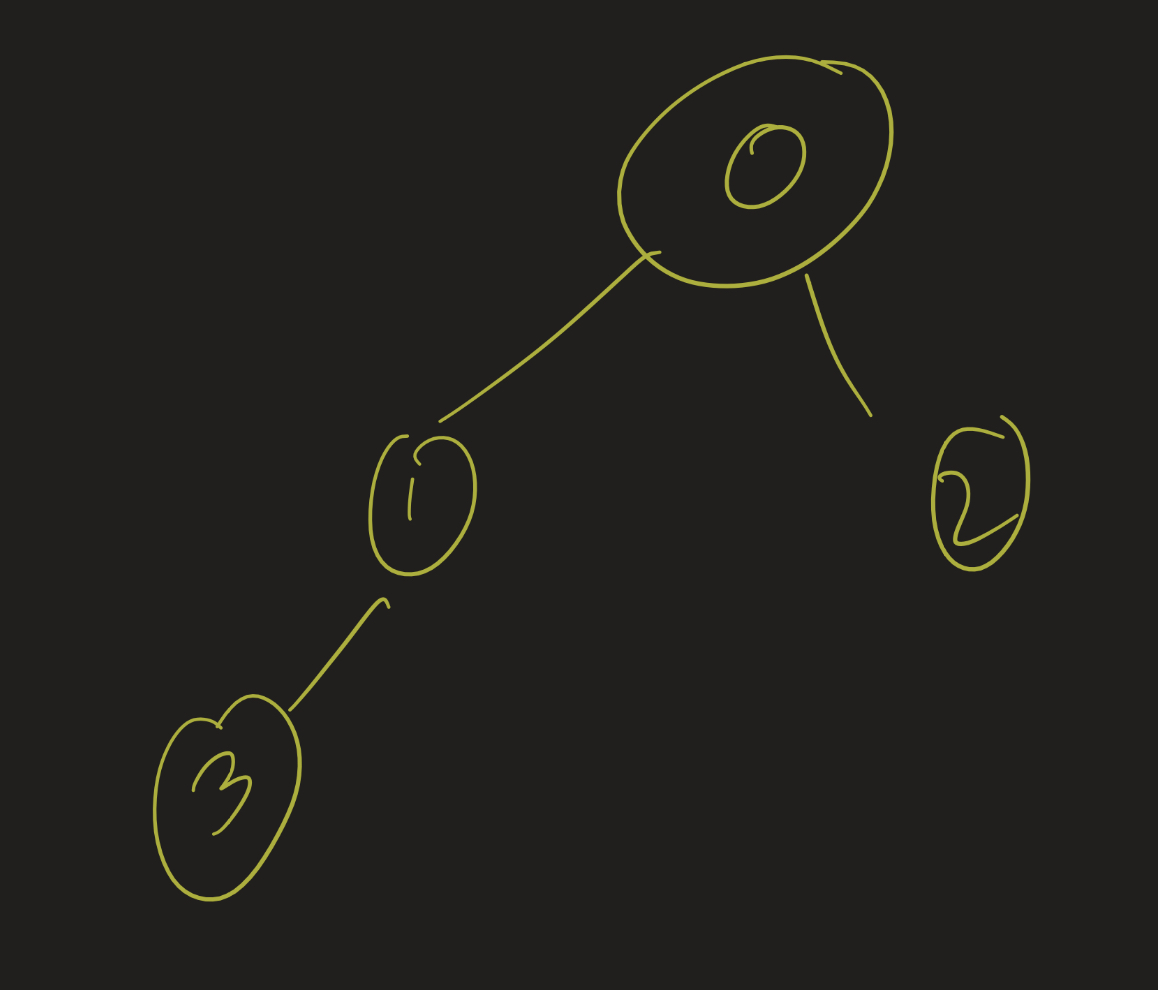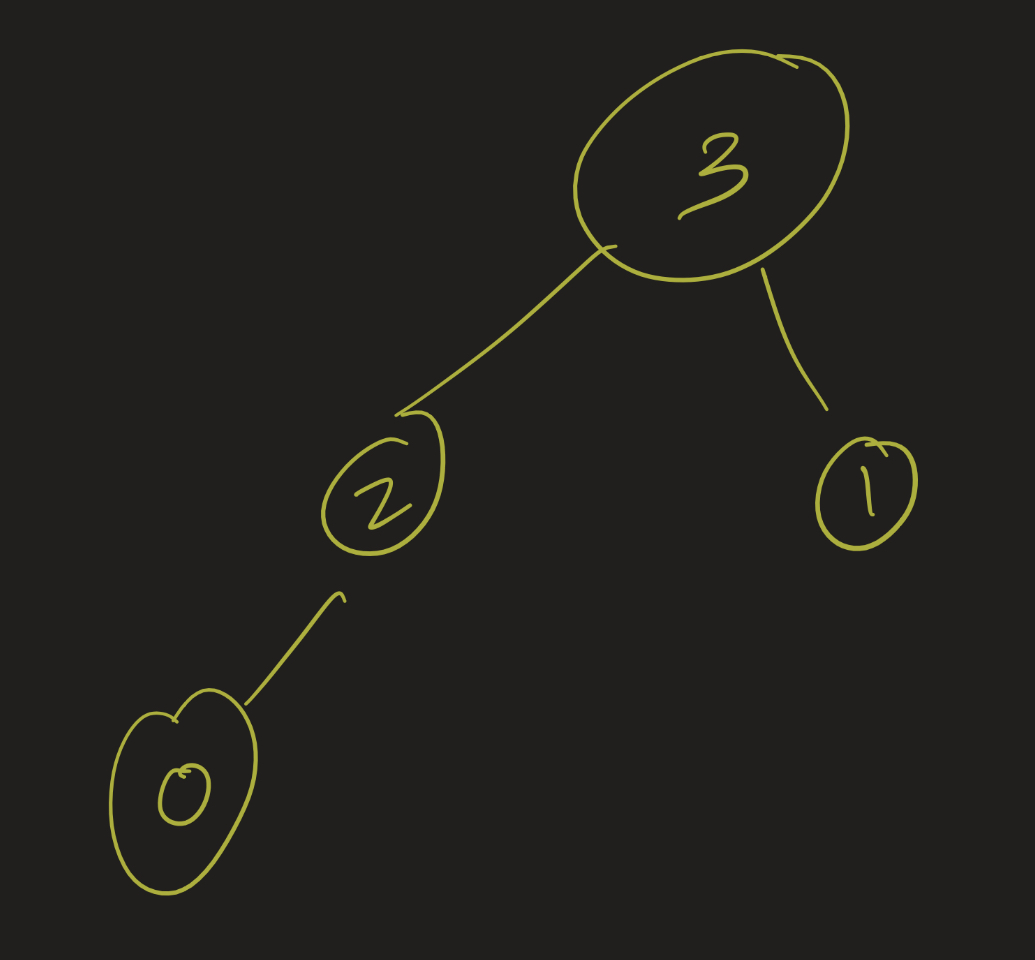Data Structures Lesson 20
Professor Abdul-Quader
Quickselect / Radix Sorting
Project 3
Due this week. Questions? Thoughts?
- Use
Parser: turn input into List of course rosters (each is a list of integers) - Step 1: turn that into a graph.
- Each “list” is a course (vertex)
- Make edges if two courses share a vertex.
- Output all the edges.
- Step 2: Color the graph.
- Step 3: Write-up / break your algorithm.
Breaking the algorithm?
- Most end up using the greedy coloring algorithm.
- How might this fail to produce the fewest colors?
- Vertex Order!
Example 1

Color vertices in order. How many colors?
Example 2

Color vertices in order. How many colors?
Final Projects
- Groups?
- Presentations on May 1 and May 5
- Paper due May 8.
- Project deliverables:
- One 25 minute presentation,
- One 5 page paper (I don’t actually care about length) thoroughly explaining the topic.
- Focus should be pedagogical: give clear descriptions of the problems, algorithms, implementations and running times.
Topics
- Other kinds of trees: Red-Black trees, B-trees, 2-3-4 trees, splay trees: Describe the data structure. Prove the running times. Explain what they are used for (don’t need to do all of these, maybe just one, or maybe more?)
- Huffman Coding (compression). Describe the compression algorithm and give a thorough explanation of the data structures used in it (the “trie” data structure). Implement the algorithm and run it on a large file (\(>2\)MB). How much does it actually compress that file?
Topics
- Union-find algorithm / Disjoint Set data structure. Explain the problem and the data structure. Explain how this data structure can be used to help solve the “Synonymous Search Queries” question in the case where the synonym relation is transitive.
- Heuristic algorithms for NP complete problems. Take your favorite NP-complete problem (not graph coloring), and describe an algorithm which attempts to solve it. Describe its running time and the scenarios for which this algorithm will work well.
Topics
- Data structures used in Operating System design
- Find the Longest Common Substring of a set of words. Explain the algorithms and their running times. There is an algorithm which uses “suffix trees”: describe how to implement this data structure and how it helps solve the problem.
- “Median of medians” pivot selection strategy. Explain the algorithm, show some examples, and implement it. Prove that this strategy results in a worst case \(O(n)\) quickselect algorithm (and worst case \(O(n \log(n))\) quicksort).
Topics
… or any other problem you’ve seen that was interesting and that you’d like to explore in more depth.
- Try to rank your preferences and let me know by Friday.
- I will try to use that to make groups
- Let me know if you have made groups already.
- Then as a group you will need to come to a consensus.
Last time
- Quicksort analysis
- Information theory lower bounds
- Interview question
External Sort
Changing the description:
- 12GB of data on disk
- 4GB of RAM
- Output to a new file on disk
Ideas?
HW 3
- HW 3 grades are posted for most.
- If you submitted multiple files, I did not grade it.
- Re-submit as a single PDF file!
Quicksort
- Last time: pick the last element as pivot.
- Or: pick a random pivot.
This question of how to select the pivot in the quicksort algorithm is well studied (in particular by Robert Sedgewick in his 1975 Ph.D thesis).
Pivot Selection schemes
- Pick the first element as a pivot. Worst case: the list is already sorted!
- Pick the last element as a pivot. Worst case: still, if the list is sorted (or in reverse order).
- Pick a random pivot. Worst case: you’re just really unlucky. Perhaps this is good enough?
We will study some other possible improvements.
Median of 3
Make the pivot be the median of three elements. Two simple implementations:
- Find the median of the first, last and middle elements.
- Find the median of three random elements.
The worst case here is still \(O(n^2)\)! But it’s somewhat less likely to happen, and on average the random version improves on the number of comparisons that the “random pivot” strategy would make.
Dual pivots
The version currently implemented in the Java standard library Arrays.sort, created by Vladimir Yaroslavskiy, Jon Bentley, and Joshua Bloch, uses two pivots. Idea:
- Pick pivots \(p_1\) and \(p_2\) with \(p_1 < p_2\).
- Partition the list into three parts: the part less than \(p_1\), the part in between \(p_1\) and \(p_2\), and the part greater than \(p_2\). At this point, \(p_1\) and \(p_2\) should be in the correct positions.
- Quicksort the three parts.
Caveat
Technically, the one in the JDK is much more complicated, but this is the spirit of the algorithm.
- Small arrays: uses insertion sort instead.
- “Close” to being sorted, mergesort is used.
- Non-primitives: “Timsort”
Quickselect
Recall the selection problem: given an unsorted list and an integer \(k\), find the \(k\)-th largest element. We can use a variant of quicksort, called quickselect, to solve this problem:
- Pick a pivot (for now, let’s pick a pivot randomly).
- Partition the list and determine the \(pivotIndex\), the position of the pivot.
- If \(k == pivotIndex\), return the pivot.
Otherwise? Recursion!
Quickselect
- If \(k < pivotIndex\), run quickselect on the list from \(start\) to \(pivotIndex - 1\).
- If \(k > pivotIndex\), run quickselect on the list from \(pivotIndex + 1\) to \(end\), searching for \(k - pivotIndex - 1\).
Example
Find the 3rd largest element of the following list: [3, 1, 4, 5, 9, 2, 6]
- Pick pivot = 3 (randomly)
- Partition: [2, 1, 3, 5, 9, 6, 4]
- Index = 2, quickselect([5, 9, 6, 4], 0)
- Pick pivot = 4 (randomly)
- Paritition: [4, 9, 6, 5]
- Index = 0: returns 4!
Running time
Worst case: \(O(n^2)\). Proof?
Best case: each partition takes \(m\) comparisons (really \(O(m)\), but we will simplify), where \(m\) is the size of the part of the array that we are looking at. If the pivot is the median every single time, then the number of comparisons needed is:
\[n + n / 2 + n / 4 + \ldots = 2n\]
which is \(O(n)\).
Average case analysis
Average case? This is the scenario where every pivot is equally likely.
Let \(T(n, k)\) be the expected time to find the \(k\)-th smallest in an array of size \(n\), and \(T(n)\) be the largest value over all \(k\).
- It takes \(n - 1\) comparisons to partition the array.
- The array is split into pieces: \(0\) and \(n - 1\), \(1\) and \(n - 2\), etc. We assume here that we always pick the larger piece.
Magic
\[T(n) \leq n - 1 + average(T(n / 2), \ldots, T(n - 1))\]
Magic: prove that \(T(n) \leq 4n\) by induction.
- True for \(T(0), T(1), T(2)\) by inspection.
- Assume that, for all \(i < n, T(i) \leq 4i\).
- Using the equation above, we get:
\[ \begin{align} T(n) &\leq n - 1 + average(4(n / 2), \ldots, 4(n - 1)) \\ &= n - 1 + 4(3n / 4) < 4n \end{align} \]
So \(T(n) = O(n)\).
Bucket Sorts
Given a list of \(N\) integers, each of which is between \(0\) and \(100\), sort it in \(O(N)\) time. (Suppose \(N\) is much larger than \(100\)).
Have we seen this before? What is the algorithm for this? Why does this not contradict the theorem from last time?
Bucket Sort
Keep 100 “buckets”. Run through the list and add to a counter. Then run through all the buckets and output them all.
Suppose there are \(N\) numbers and \(M\) buckets. What is the running time?
Radix Sorting
What if \(N\) is much smaller than \(M\)? In particular: how do we sort \(10\) elements that are all between \(1\) and \(999\)? Two ideas:
- “Most significant digit” sorting: sort by the hundreds digit, then tens digit, then ones.
- “Least significant digit” sorting: sort by 1s digit, then 10s, then 100s.
Important: each step must be stable.
Exercise: try this out on 125, 111, 061, 209, 290, 095.
Exercise
Consider an \(n\) by \(n\) matrix \(M\), whose rows and columns are each sorted in increasing order. That is, the elements of each row increase as you go left to right, and the elements of each column increase as you go down. Determine if a number \(x\) is in the matrix in \(O(n)\) comparisons.
Homework
Due Friday, 4/25:
- Implement the quicksort algorithm in Java using a randomized pivot selection strategy. (That is, pick the pivot to be a random element of the list). Test it out on a randomly generated array and make sure it works.
Homework
- Given an array of \(5\) elements, what is the probability that the worst case for quicksort actually happens? That is, what is the probability that every pivot we select happens to be either the largest or smallest possible element? What if the array has \(10\) elements?
Homework
- Describe an algorithm (in English or pseudocode) which uses at most 7 comparisons to sort an array of 5 elements.
- Sort 3, 1, 4, 1, 5, 9, 2, 6 using mergesort. Show every step.